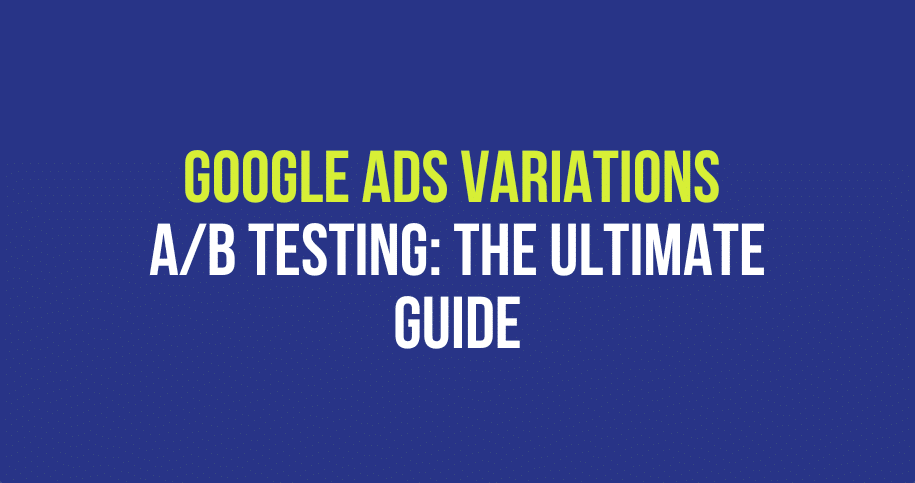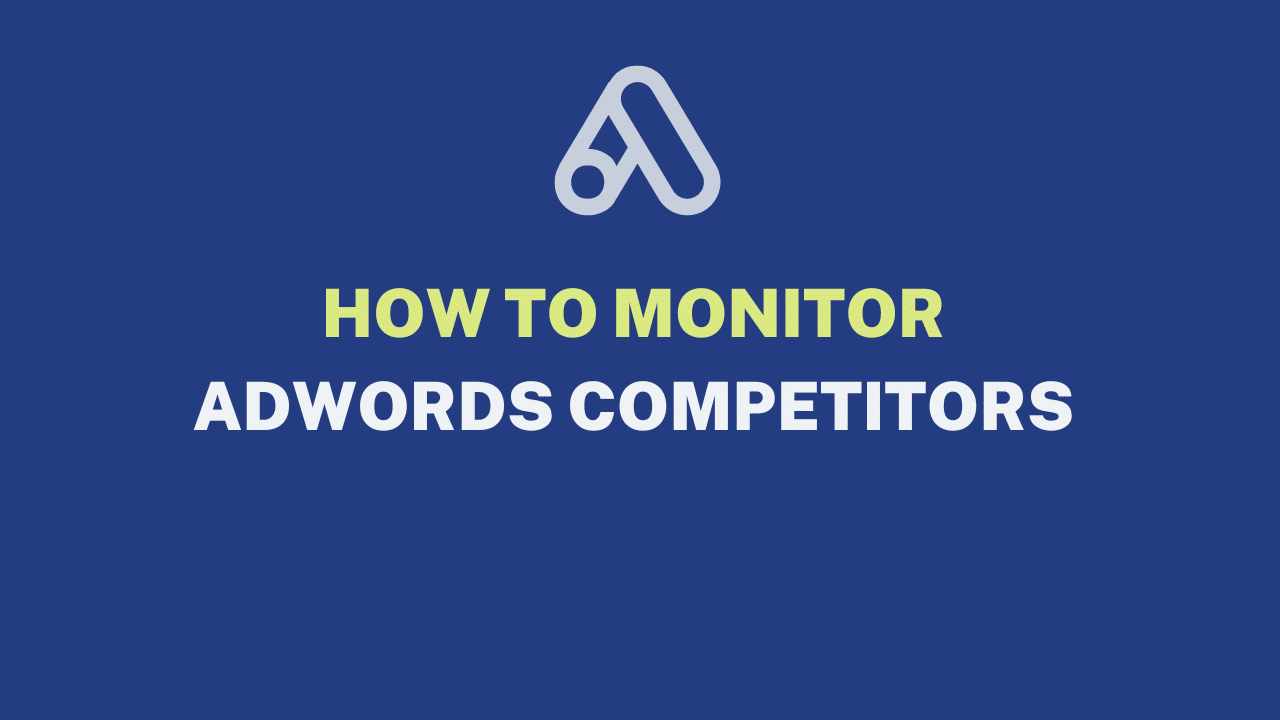Are you tired of seeing lackluster results from your Google Ads campaigns? If so, it may be time to consider A/B testing. A/B testing is a process that allows you to test different variations of your ads to see which one performs best. This article will dive into Google Ads Variations for A/B testing, exploring how it works, why it’s important, and the best practices for conducting successful A/B tests.
By the end of this article, you will have a clear understanding of how to leverage Google Ads variations for A/B testing to improve the performance of your Google Ads campaigns and achieve your marketing goals. Let us begin.
Understanding Google Ads Variations
Google Ads variations are different versions of your ad that you create to test against each other. With variations, you can experiment with different ad elements, such as headlines, descriptions, images, and calls-to-action, to see which version performs better with your target audience.
Types of Google Ads Variations
There are different types of Google Ads variations that you can create depending on your marketing goals.
Some of the most common types include:
- Text variations: This involves testing different ad copy, such as headlines and descriptions, to see which version resonates better with your audience.
- Image variations: This involves testing different images or visuals in your ads to determine which one captures your audience’s attention better.
- Landing page variations: This involves testing different landing pages to see which one converts more visitors into customers.
- Targeting variations: This involves testing different target audience groups to see which one responds better to your ads.
Benefits of using Google Ads Variations:
There are many benefits of using Google Ads variations, including:
- Improved ad performance: By testing different ad variations, you can identify which ad elements resonate better with your audience and optimize your campaigns accordingly.
- Increased click-through rates: Creating more compelling ads can attract more clicks and drive more traffic to your website.
- Better return on investment: Optimizing your ads for higher conversions can maximize your ad spend and achieve a better return on investment.
A/B Testing with Google Ads Variations
A/B testing involves creating two or more variations of an ad and showing them to a randomly selected group of your target audience. Analyzing the results lets you identify which variation performs better and make data-driven decisions to optimize your campaigns.
Why A/B testing is essential for Google Ads Variations
A/B testing is crucial for Google Ads because it allows you to identify which ad elements resonate better with your audience and optimize your campaigns for higher performance. You can improve your click-through rates, conversion rates, and overall return on investment by testing different variations.
Setting up an A/B test in Google Ads Variations
To set up an A/B test in Google Ads Variations, follow these steps:
- Identify the ad elements you want to test: Decide which ad elements, such as headlines, descriptions, images, or calls-to-action, you want to test in your variations.
- Create your variations: Create two or more variations of your ad, each with a different element you want to test.
- Set up your ad campaign: Set up your ad campaign in Google Ads and create a new ad group for your A/B test.
- Create your ads: Create your ads in each variation and set them up in the ad group.
- Set the rotation settings: In the ad group settings, choose the rotation settings to evenly rotate your ads to ensure each variation is shown an equal number of times.
- Launch your campaign: Launch your campaign and monitor the performance of each variation over time.
- Analyze your results: Once your campaign has run sufficiently, analyze the results to determine which variation performed better.
- Optimize your campaigns: Use the insights from your A/B test to optimize your campaigns and improve their performance.
Components of a Google Ad
A Google ad typically consists of the following components:
- Headline: The headline is the ad’s first and most prominent part. It should be attention-grabbing and convey the main message of your ad.
- Description: The description provides more detail about your product or service and should entice the user to click on your ad.
- Display URL: The display URL is the visible web address beneath the ad’s headline. It should be relevant to the landing page the ad leads to.
- Call-to-action: A button or link encourages the user to take a specific action, such as “buy now” or “sign up.”
- Ad extensions: They provide additional information and options for the user, such as phone numbers, locations, reviews, or social media links.
To leverage the components of a Google ad, you can:
- Use attention-grabbing headlines: Create headlines that are relevant, concise, and compelling to attract users’ attention and encourage them to click on your ad.
- Highlight unique selling propositions in your description: Use your description to communicate your unique selling propositions and differentiate your product or service from competitors.
- Use relevant display URLs: Choose a display URL that accurately reflects your ad’s landing page and content.
- Include strong call-to-actions: Use clear and persuasive call-to-actions in your ad variation to encourage users to take the desired action, such as purchasing or filling out a form.
- Utilize ad extensions: Use ad extensions to provide additional information to help users decide or take action. Ad extensions can also increase your ad’s visibility and click-through rate.
How to Analyze and Interpret A/B Testing Results
To analyze A/B test results, you need to compare the performance of each variation and determine which one performed better from your Google ads account. You can use key performance indicators (KPIs) such as click-through rates, conversion rates, or revenue generated across multiple campaigns to determine which variation was more successful. You can also use statistical analysis tools to ensure that the differences between the variations are statistically significant.
Understanding statistical significance
Statistical significance refers to the likelihood that the differences between the variations are not due to chance. It is measured using a statistical method called hypothesis testing. In A/B testing, the null hypothesis is that there is no significant difference between the variations, while the alternative hypothesis is that there is a significant difference. The level of statistical significance is typically set at 95% or higher.
Interpreting A/B test results
When interpreting A/B test results with your Google ads tool, you should consider the following factors:
- Statistical significance: Determine whether the differences between the variations are statistically significant. If the differences are not statistically significant, the results are inconclusive and more testing is needed.
- Sample size: Ensure that the sample size is large enough to generate reliable results. A small sample size can lead to inaccurate conclusions.
- KPIs: Look at the KPIs to determine which variation performed better. Choose the KPIs that are most relevant to your campaign goals.
- Secondary metrics: Look at secondary metrics to gain more insights into the performance of each variation. Secondary metrics can provide additional information that can help you optimize your campaigns.
- Consider other factors: Consider other factors that may have influenced the results, such as seasonality, changes in user behavior, or changes in the competitive landscape.
Analyzing and interpreting A/B test results allows you to make data-driven decisions to optimize your campaigns and improve their performance with your ad variation results.
Frequently Asked Questions
What is the maximum number of variations that can be created for a single Google Ads campaign?
There is no specific maximum number of variations that can be created for a single Google Ads campaign. However, when you run ad variations, it is recommended to keep the number of variations manageable to ensure accurate analysis of the A/B test results.
Can variations be created for different ad formats such as text, image, and video ads?
Yes, variations can be created for different ad formats in Google Ads. However, the testing process and metrics may vary depending on the ad format and campaign objectives.
How long should an A/B test be run in Google Ads variations?
The duration of an A/B test in Google Ads variations can vary depending on several factors, such as the sample size, the level of statistical significance, and the campaign objectives. Generally, running the test for at least 2-4 weeks is recommended to gather sufficient data for analysis.
Can variations be created for different geographic locations and languages?
Variations can be created for different geographic locations and languages in Google Ads. This can help to tailor the ad messaging and optimize campaign performance for specific target audiences. They show you how well your ads perform.
How can I determine the winning variation in an A/B test in Google Ads variations?
The winning variation in an A/B test in Google Ads variations can be determined by comparing each variation’s key performance indicators (KPIs) and determining which one performed better. KPIs such as click-through rates, conversion rates, and revenue generated can be used to determine the winning variation. It is also vital to ensure that the differences between ads are statistically significant to make accurate conclusions with every new ad variation.
Conclusion
A/B testing is crucial in Google Ads variations as it allows marketers to compare the performance of different variations and determine which one is more effective. A/B testing can help to improve campaign performance by identifying the best-performing variations and optimizing campaigns accordingly. Without A/B testing, it can be difficult to determine which variation is more effective and optimize campaigns for better results.




